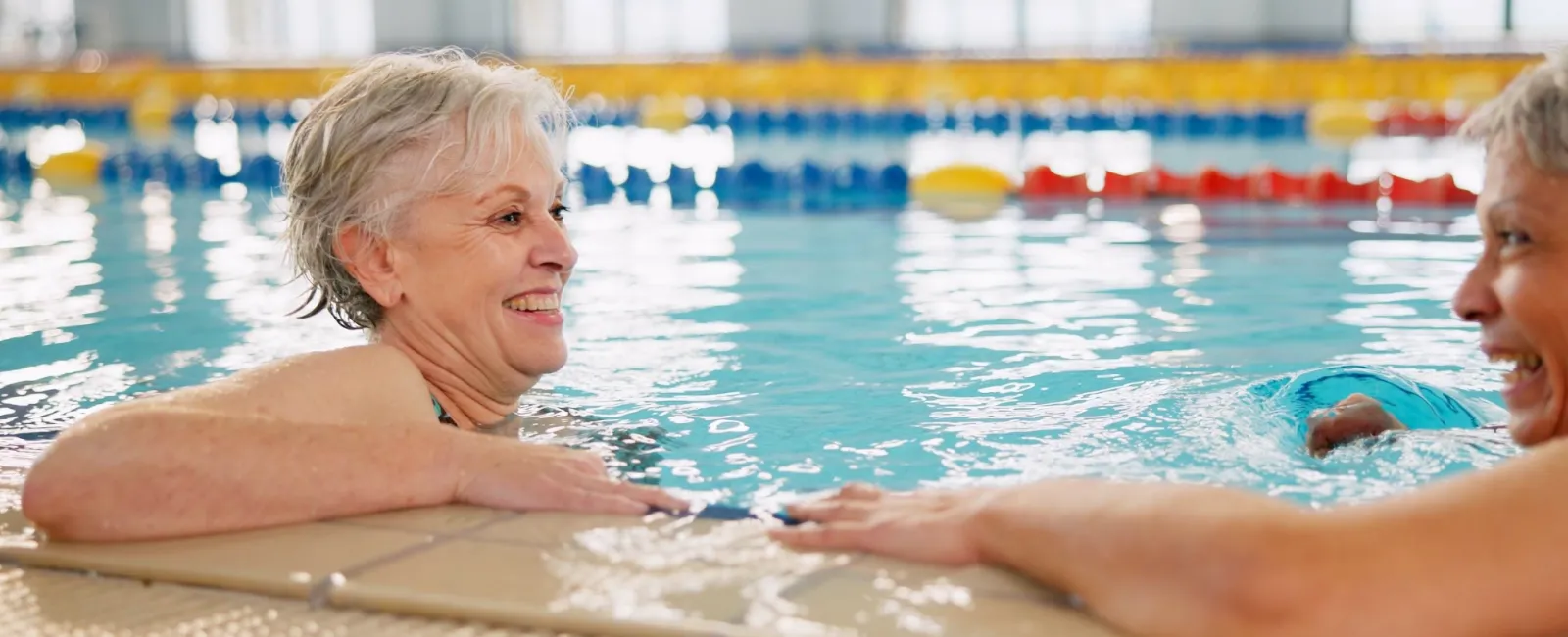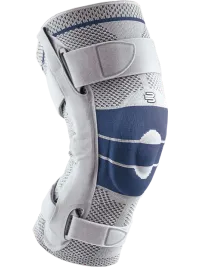
Physical Therapy Assistant
You have probably heard that water is an excellent forum for low impact exercises, physical therapy, and resistance training. In fact, because of its many beneficial attributes, OrthoSouth physical therapists often use aquatic therapy to help patients regain range of motion and increase strength after injury or surgery.
We sat down with OrthoSouth physical therapy assistant Sharon Dunseath, PTA, BS, ATRIC, to discuss the details of who can benefit from aquatic exercise and why.
Q. First question, who can benefit from swimming or water aerobics?
Sharon: People of all fitness levels can make physical improvements in the water. Aquatic evidence-based research now justifies exercising in the pool as part of the treatment plan for a variety of diagnoses ranging from osteoarthritis: rheumatology conditions (arthritis/fibromyalgia); neurological conditions; cardiovascular conditions; sensory disorders; spasticity; balance deficits; obesity; orthopedic issues; (pre op and/or post op); circulatory insufficiency as well as many more.

Q. What are the benefits of using a pool for exercising? Are there any risks or drawbacks?
Sharon: Many people who have floated, swam, or played in a pool of water are aware of the buoyancy and resistance to movement that water provides. But most people are not aware of the benefits of all the properties of the water: buoyancy, hydrostatic pressure, resistance, and temperature. Buoyancy of the water causes decreased activation of muscle exertion, enhances joint flexibility and range of motion, increases oxygen delivery, and strengthens muscle in opposition to buoyancy. Hydrostatic pressure decreases pain and edema as well as increasing venous return. The temperature of the water is determined by the goal of the person exercising. Swimmers will want to work out in a temperature between 77 to 82 degrees. The ideal water temperature for a therapeutic workout is between 87 to 92 degrees.
Some of the precautions to keep in my mind before starting a water exercise program include but are not limited to the following: all infections, allergies to pool chemicals, open wounds, gastro-intestinal issues, and/or fear. The best advice is, if there are any doubts, consult with your doctor.
Q. Water seems to be a great low impact option for exercise. What type of higher impact exercise can it take the place of?
Sharon: Aquatic exercising can take the place of any type of weight bearing activity. When standing chest deep in water, a person weighs only about 30% of what they would weigh on dry land. Standing in waist-deep water, a person would weigh 50% of their dry land weight. When exercising in the water, you are working the body as a whole on the six essential qualities of function: balance, coordination, flexibility, endurance, speed, and strength.
Q. Describe a patient who could benefit from water aerobics/water therapy.
Sharon: Aquatic therapy/exercising is not limited to one population. Although studies have shown, aquatic therapy would benefit anyone who experiences joint inflammation and decreased range of motion; experiences back, upper extremity, and/or lower extremity pain; difficulty walking and/ weight bearing; lymphedema; and general weakness.
Sharon Dunseath, PTA, BS, ATRIC, is a physical therapy assistant with a focus on aquatic therapy. She works with patients in the therapy pool at the OrthoSouth PT clinic on Briarcrest Ave. in East Memphis. For more information regarding our aquatic therapy program, please call 901.261.2506.

